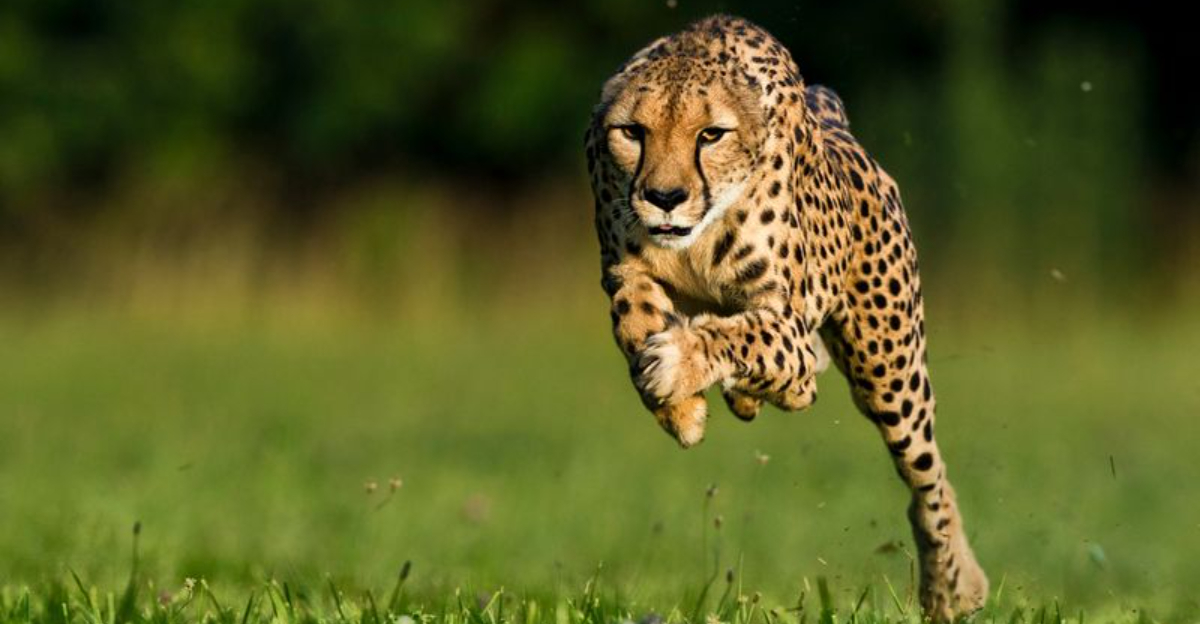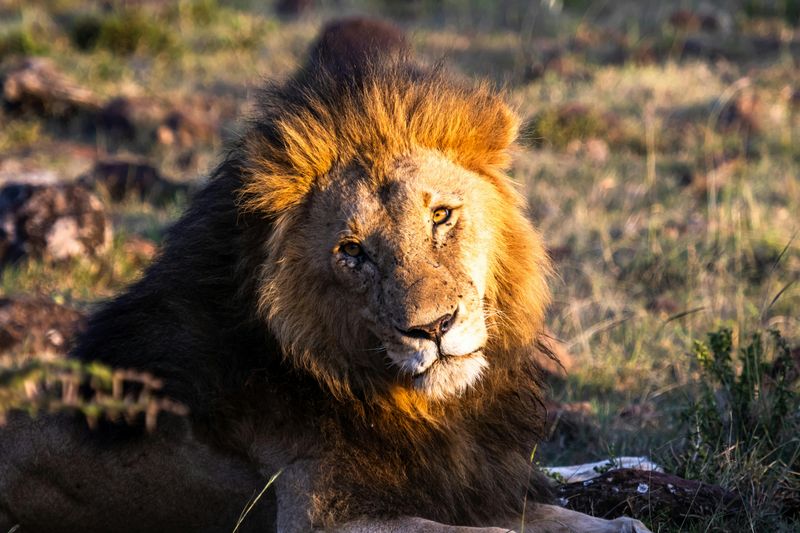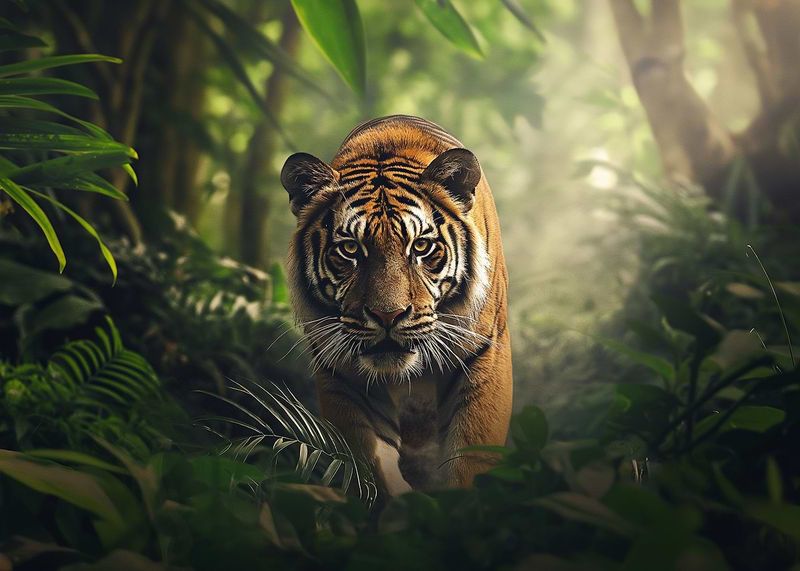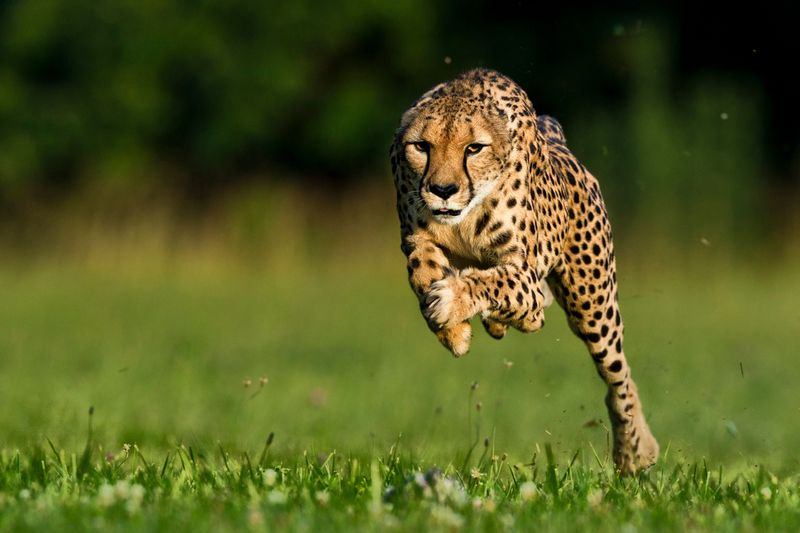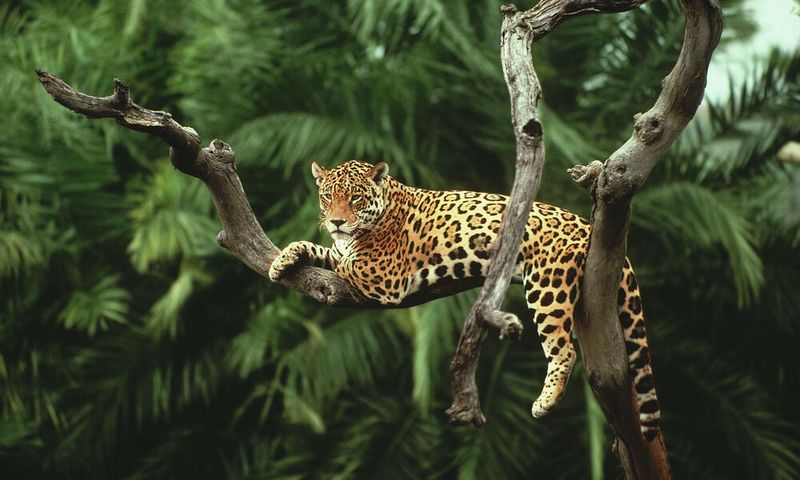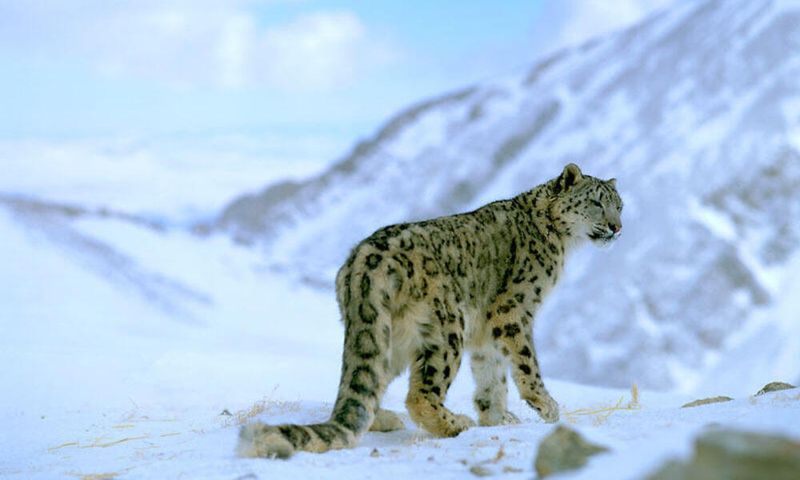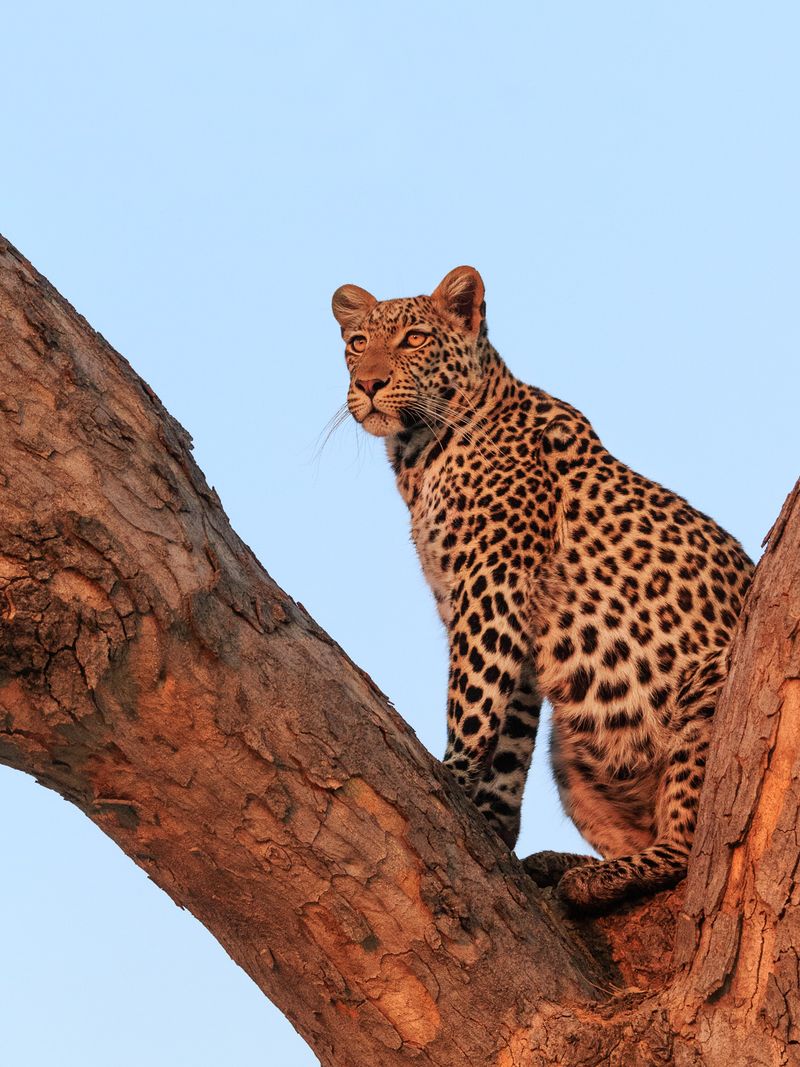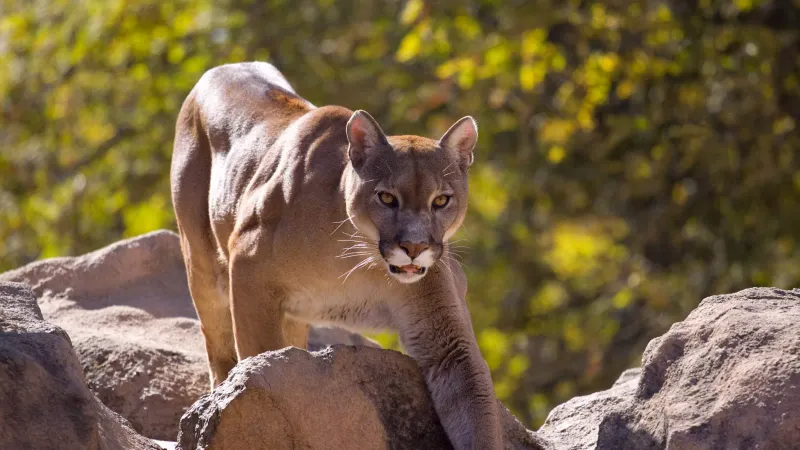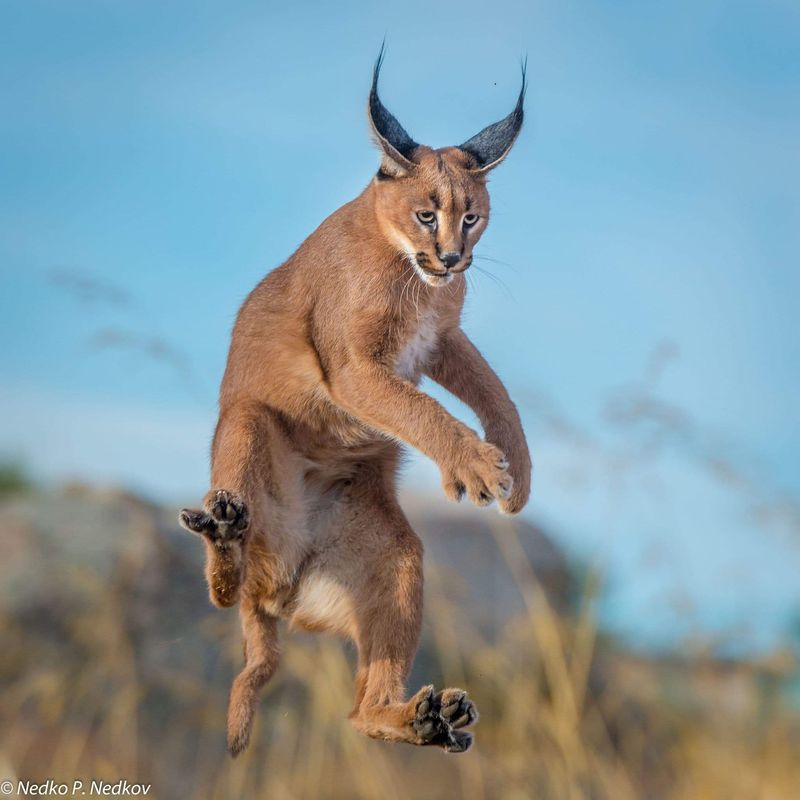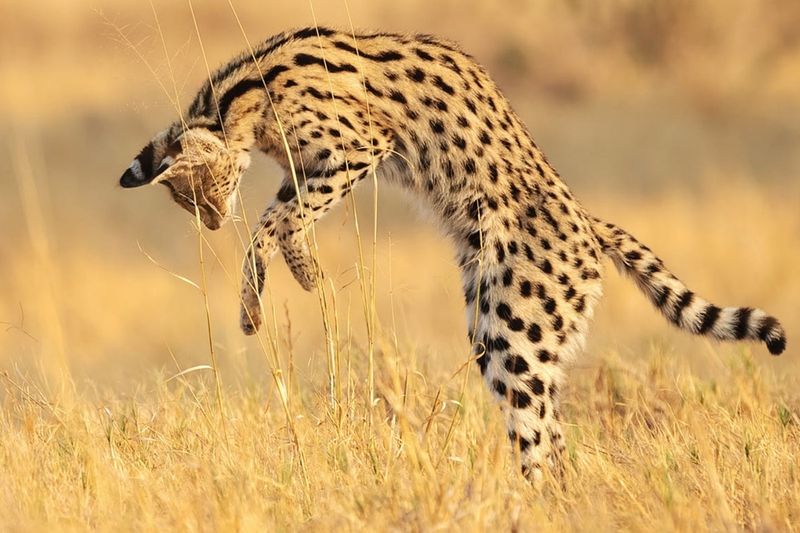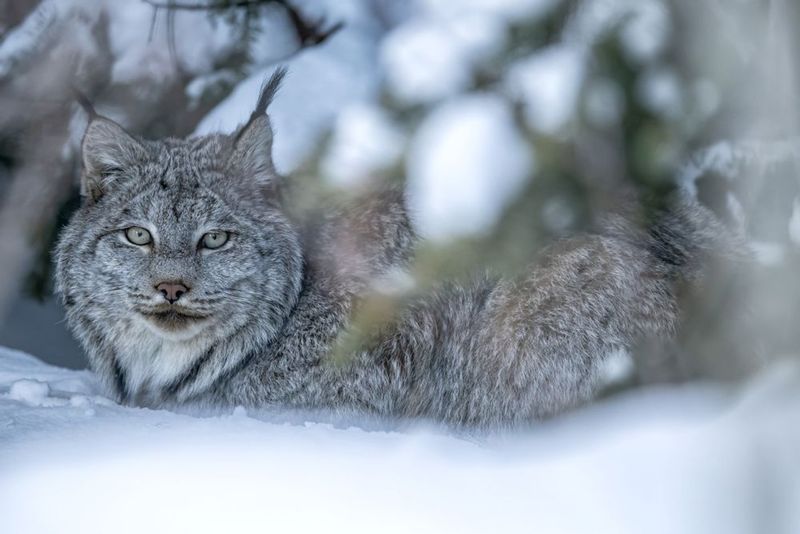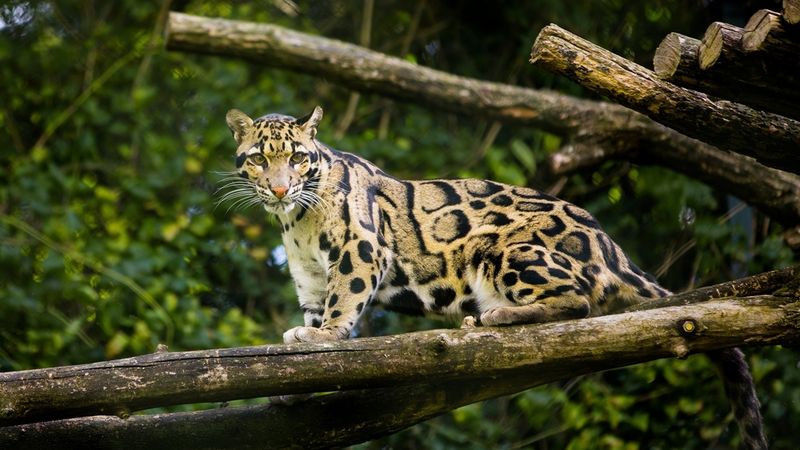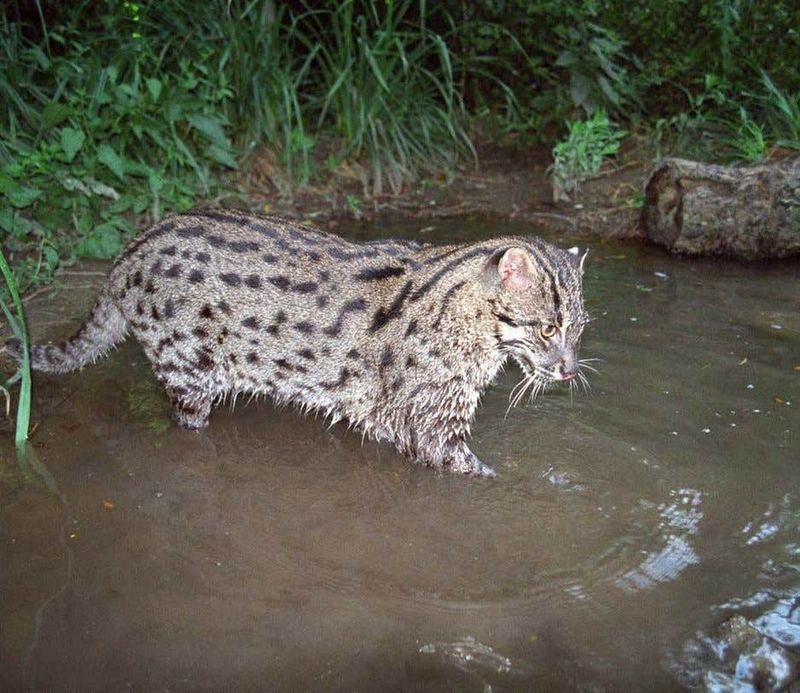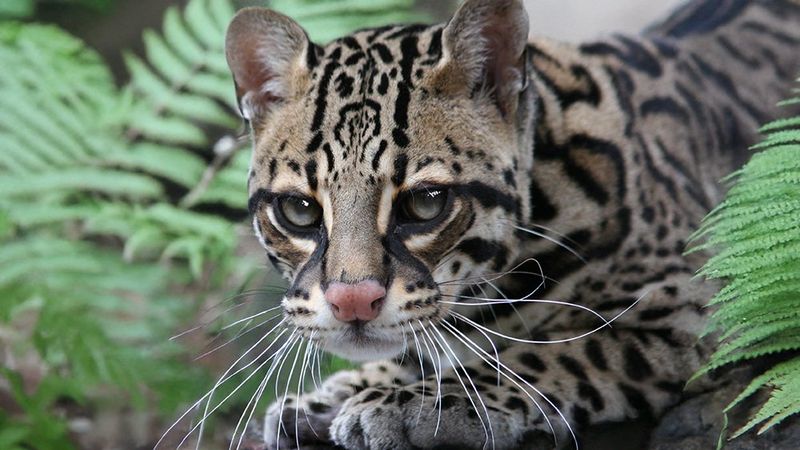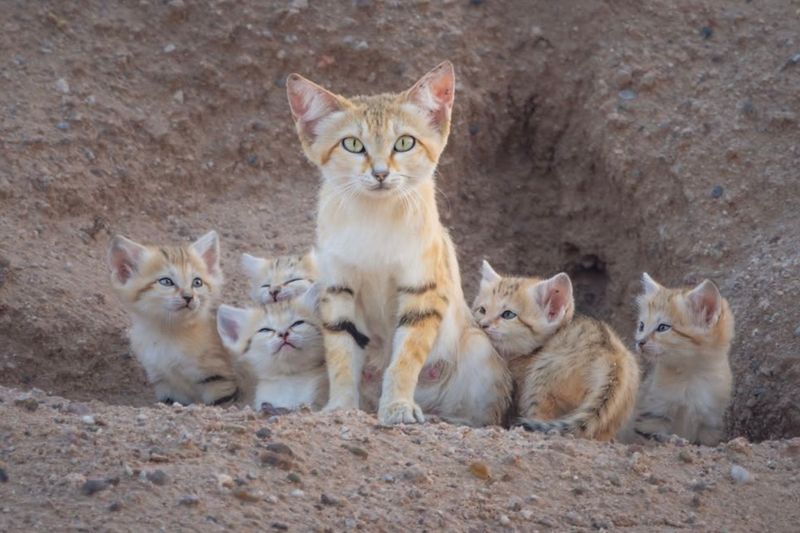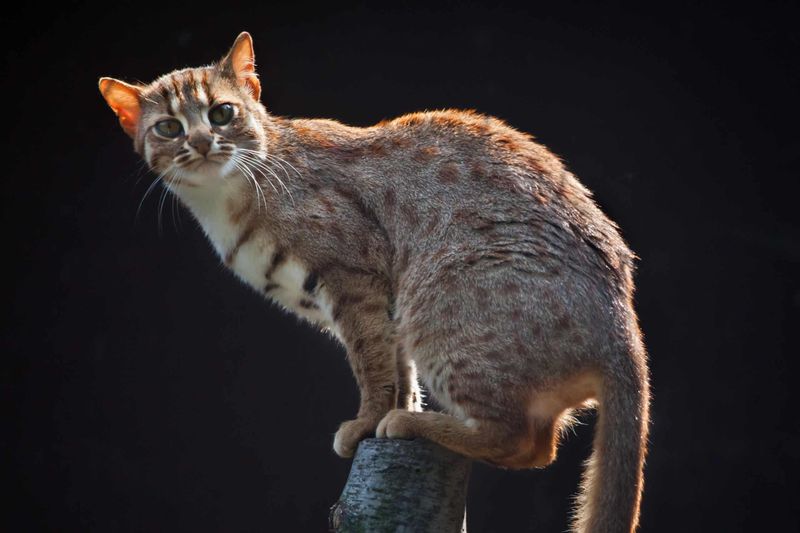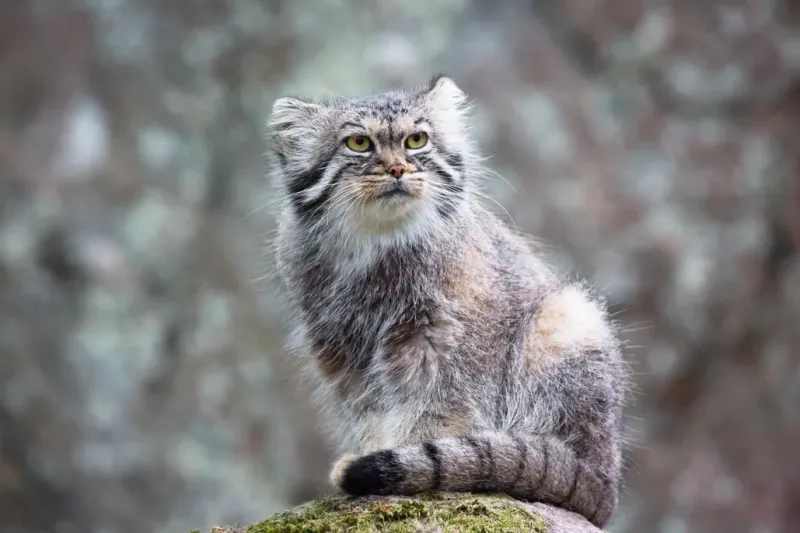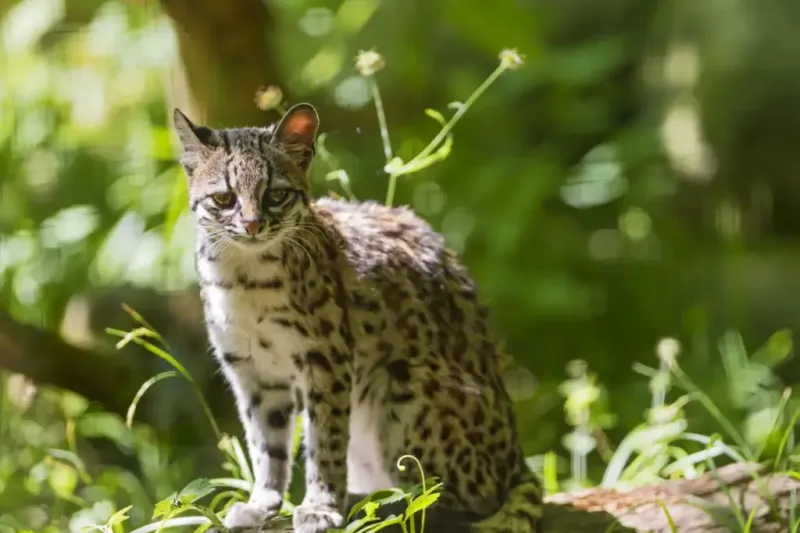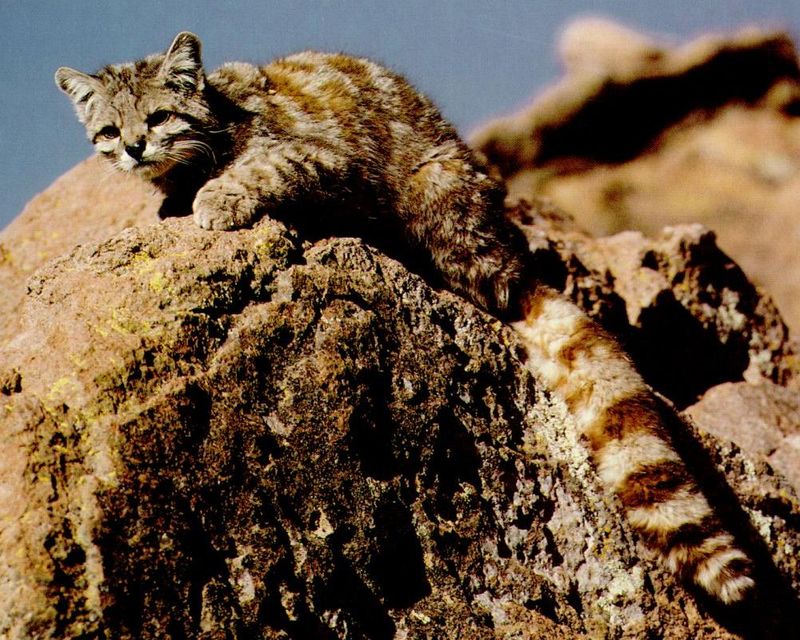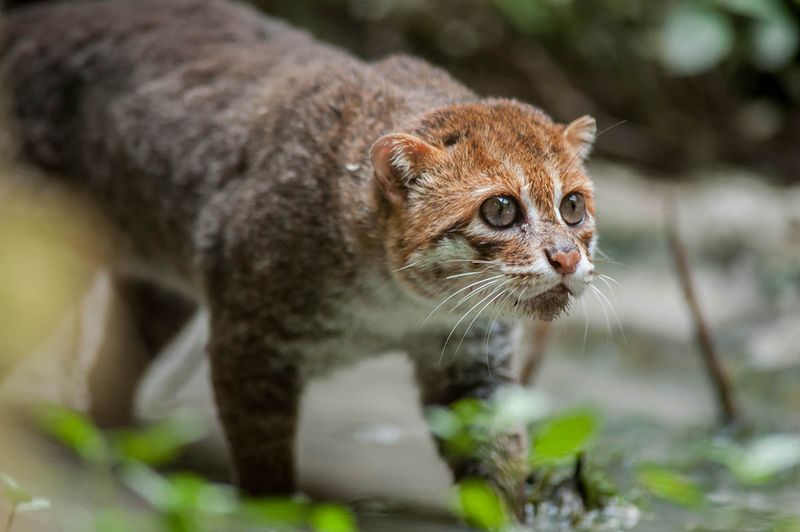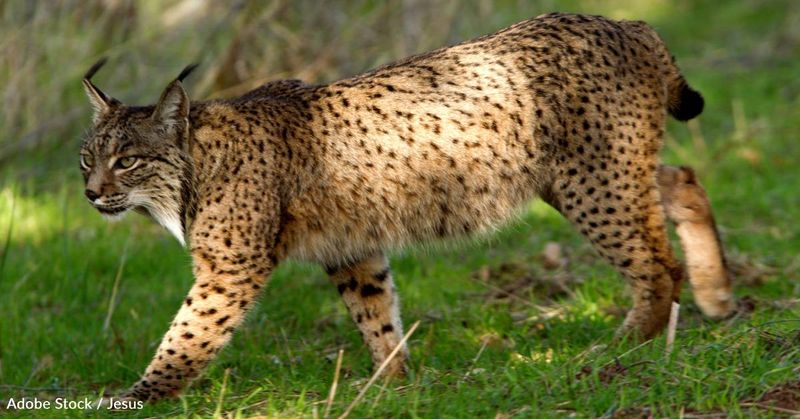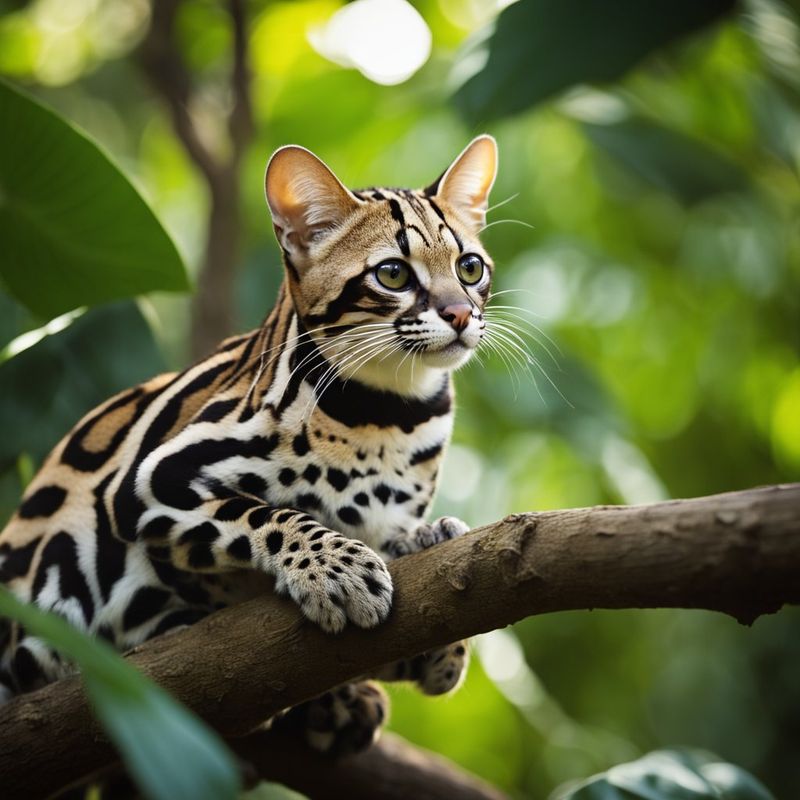📖 Table of Content:
- 1. African Lion
- 2. Bengal Tiger
- 3. Cheetah
- 4. Jaguar
- 5. Snow Leopard
- 6. Leopard
- 7. Cougar
- 8. Caracal
- 9. Serval
- 10. Lynx
- 11. Clouded Leopard
- 12. Fishing Cat
- 13. Ocelot
- 14. Sand Cat
- 15. Rusty-Spotted Cat
- 16. Pallas’s Cat
- 17. Kodkod
- 18. Andean Mountain Cat
- 19. Flat-headed Cat
- 20. Iberian Lynx
- 21. Margay
Explore the fascinating world of wild cats, from the most photographed to the rare ones you’ve probably never heard of. In this post, we delve into 21 unique feline species that capture the imagination of wildlife photographers and animal enthusiasts alike. These cats, ranging from iconic big cats to elusive and lesser-known species, highlight the diversity and beauty of catkind in the wild. Discover their unique traits, habitats, and the stories that make each of them a captivating subject of photography and conservation efforts.
1. African Lion
Known for its majestic mane and regal presence, is often dubbed the “King of the Jungle”. Its roar echoes across the savanna, a powerful symbol of strength and dominance. Social creatures, lions live in prides, where females hunt and males protect the territory. Their golden coats blend with the sun-drenched grasslands of Africa. Lion populations are threatened by habitat loss and poaching, making conservation efforts crucial. Did you know? The lion’s roar can be heard up to five miles away, a true testament to its formidable nature.
2. Bengal Tiger
The Bengal tiger, with its striking orange coat and black stripes, is the epitome of feline beauty. Found primarily in India, these tigers are solitary and territorial. They roam the dense jungles stealthily, their stripes providing perfect camouflage. Known for their strength and grace, they are apex predators in their environment. Bengal tigers are sadly endangered, facing threats from poaching and habitat destruction. Fun fact: Each tiger’s stripe pattern is unique, much like a human fingerprint, making them identifiable in the wild.
3. Cheetah
Renowned for their speed, cheetahs are the fastest land animals, reaching speeds up to 75 mph. Their slender, aerodynamic bodies and long legs make them exceptional hunters in the African plains. Unlike other big cats, cheetahs rely on speed over stealth. Their distinctive black “tear marks” help reduce glare from the sun, aiding their vision during high-speed chases. However, their numbers are dwindling due to habitat encroachment and human conflict. A unique feature: cheetahs cannot roar, but they do purr like domestic cats.
4. Jaguar
Jaguars, with their robust build and striking rosette-patterned coats, are the apex predators of the Americas. Found primarily in the Amazon rainforest, they are adept swimmers, often hunting in rivers. Jaguars use their powerful jaws to pierce the skulls of their prey, a hunting technique unique among big cats. Though elusive, they are often photographed lounging in the sun-dappled jungle. Conservationists are working hard to protect these magnificent creatures from threats like deforestation and poaching. Interesting fact: Jaguars are solitary animals, only coming together to mate.
5. Snow Leopard
Known as the “ghost of the mountains”, snow leopards are elusive and rarely seen. Their thick fur and long, bushy tails are perfect adaptations to the cold, mountainous regions of Central Asia. Solitary by nature, these cats are expert climbers, navigating steep, rocky terrain with ease. They face significant threats from poaching and habitat fragmentation. A charming detail: snow leopards cannot roar, but they can emit a variety of sounds, including meows and yowls. Their mystical appearance and elusive nature make them a favorite subject for photographers.
6. Leopard
Leopards are known for their adaptability, thriving in diverse habitats from savannas to rainforests. Their spotted coats provide excellent camouflage, allowing them to stalk prey with stealth. Unlike other big cats, leopards are skilled climbers, often dragging their kills into trees to avoid scavengers. Their powerful, silent presence is a testament to their hunting prowess. Leopards face threats from habitat loss and poaching. Intriguing fact: leopards can leap over 20 feet in a single bound, showcasing their incredible agility.
7. Cougar
The cougar, also known as the mountain lion or puma, is the largest of the small cats. Its adaptability allows it to thrive in both arid deserts and dense forests across the Americas. Cougars have powerful hind legs for jumping, capable of making impressive leaps when hunting. Solitary and elusive, they are rarely observed by humans. Despite their size, cougars cannot roar; instead, they communicate with purrs and hisses. A cougar’s presence is often detected by its tracks rather than sightings, adding to its mysterious allure.
8. Caracal
The caracal, with its striking tufted ears and sleek body, is a master of agility and stealth. Found in Africa and parts of Asia, these cats are known for their incredible leaping ability, able to snatch birds mid-air. Caracals are solitary hunters, preferring to stalk their prey under the cover of night. Their reddish-brown coats blend seamlessly with the dry grasslands. A quirky feature: caracals can make a range of vocalizations, from growls to purrs. Their enigmatic presence adds a touch of mystery to the wild.
9. Serval
With its long legs and large ears, the serval is perfectly adapted for hunting in the African savanna. These medium-sized cats are known for their incredible hearing, which allows them to locate prey in the tall grasses. They hunt by leaping and pouncing with precision. Servals have a distinctive spotted coat, which provides camouflage in their natural habitat. Despite being solitary hunters, they are occasionally seen during daylight hours. Fun fact: servals have the longest legs relative to body size of any cat, aiding their high jumps.
10. Lynx
The lynx, with its tufted ears and short tail, is a symbol of the Northern wilderness. Found in the dense forests of North America and Eurasia, they are solitary animals known for their patience and stealth. Their thick fur provides insulation against harsh climates, while their wide, padded paws aid in silently stalking prey through the snow. Lynxes are skilled hunters, preying mostly on small mammals and birds. A curious fact: lynxes can hear a mouse step on a twig from 250 feet away, thanks to their exceptional hearing.
11. Clouded Leopard
Named for its cloud-like spots, is an arboreal marvel. Found in the rainforests of Southeast Asia, these cats are exceptional climbers, often seen lounging on branches. Their long canine teeth and strong jaw muscles are reminiscent of prehistoric saber-toothed cats. Despite their fierce appearance, clouded leopards are secretive and rarely seen in the wild. They face threats from deforestation and poaching. Fun trivia: clouded leopards can hang upside down from branches, showcasing their incredible climbing abilities and agility.
12. Fishing Cat
True to its name, the fishing cat is an adept swimmer and hunter of fish. Found in the wetlands of South and Southeast Asia, these cats are perfectly adapted to their aquatic environment. Their partially webbed feet and water-repellent fur assist in capturing slippery prey. Solitary by nature, fishing cats are nocturnal hunters. They are currently threatened by wetland destruction and human encroachment. Did you know? Fishing cats can swim long distances, making them unique among their feline relatives in their aquatic prowess.
13. Ocelot
The ocelot, with its striking coat of spots and stripes, is a nocturnal hunter of the Americas. These medium-sized cats are often compared to domestic cats in appearance but are much more elusive. They thrive in a variety of habitats, from tropical forests to arid scrublands. Ocelots are solitary creatures, known for their stealth and agility. Their beautiful fur once made them a target for the fur trade, but they are now protected in many regions. A fascinating fact: ocelots can rotate their ankles, aiding in tree climbing.
14. Sand Cat
Perfectly adapted to desert life, is a master of survival in harsh conditions. With fur-covered feet to protect against scorching sands and an ability to go long periods without water, this small feline is a desert dweller of Africa and Asia. Sand cats are nocturnal hunters, preying on rodents and reptiles. Their sandy-colored coats provide excellent camouflage against the desert backdrop. Despite their hardy nature, they are vulnerable to habitat loss. Fun tidbit: sand cats have been known to dig burrows to escape extreme desert temperatures.
15. Rusty-Spotted Cat
One of the smallest wild cats, thrives in the forests of Sri Lanka and India. Its tiny frame and rusty spots make it an elusive creature of the night. Despite its size, it is a skilled hunter, preying on small mammals and birds. These cats are adept climbers and often use trees to avoid predators. Due to their reclusive nature, they are seldom seen in the wild. An intriguing note: the rusty-spotted cat’s agility and speed help it survive in environments where larger predators roam.
16. Pallas’s Cat
Pallas’s cat, with its dense fur and stocky build, is a master of the cold steppes of Central Asia. Known for its expressive face and short legs, this small cat is well adapted to high altitudes and harsh climates. Its fur changes color with the seasons, providing camouflage against predators. Pallas’s cats are solitary, spending most of their time in burrows or rock crevices. A fun fact: they have the longest and densest fur of any wild cat, a necessity for survival in freezing temperatures.
17. Kodkod
The smallest wild cat in the Americas, is native to the temperate rainforests of Chile and Argentina. Its small size and spotted coat make it an expert at navigating dense underbrush. Kodkods are primarily nocturnal, preying on birds and small mammals. Despite their elusive nature, they are occasionally seen during daylight. They face threats from habitat destruction and are classified as vulnerable. Did you know? Kodkods have the largest eyes relative to their head size among cats, enhancing their night vision.
18. Andean Mountain Cat
The Andean mountain cat, among the rarest and least known wild cats, is native to the high Andes of South America. With a thick coat and bushy tail, it is well adapted to the cold, arid environment. These solitary cats are most active at twilight and dawn, preying on small mammals. Not much is known about their behavior due to their elusive nature. They are critically endangered, facing threats from habitat loss and hunting. An interesting fact: the Andean mountain cat is often considered a symbol of the high Andes’ unique biodiversity.
19. Flat-headed Cat
The flat-headed cat is a rare and little-known species native to the wetlands of Southeast Asia. With its characteristic flat head and elongated body, it is uniquely adapted to its aquatic environment. These cats are skilled swimmers and primarily hunt fish and frogs. Their conservation status is precarious due to habitat destruction. Despite their rarity, they play a critical role in the ecosystem as indicators of wetland health. A peculiar note: flat-headed cats have retractable claws that are partially webbed, aiding them in catching slippery prey.
20. Iberian Lynx
The Iberian lynx, once on the brink of extinction, is a conservation success story from the Iberian Peninsula. With its striking tufted ears and spotted coat, it inhabits Mediterranean forests and scrublands. These lynxes are solitary and territorial, primarily hunting rabbits. Thanks to intensive conservation efforts, their population is slowly recovering. They remain critically endangered, facing threats from habitat loss and prey decline. Did you know? The Iberian lynx has the most restricted range of all lynx species, highlighting the importance of ongoing conservation work.
21. Margay
A nocturnal feline of Central and South America, is a masterful climber. Its agile movements and ability to rotate its ankles allow it to descend trees headfirst, a unique trait among cats. The margay’s large eyes enhance its night vision, while its spotted coat provides camouflage in the dappled forest light. These solitary cats are primarily arboreal, hunting birds and small mammals. Despite facing habitat loss, margays are known for their adaptability. Intriguingly, margays can mimic the calls of their prey to lure them closer.
